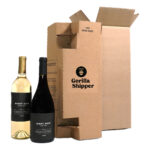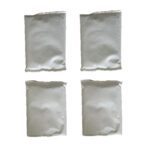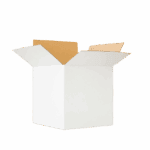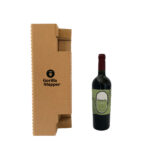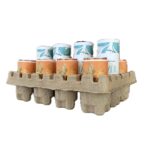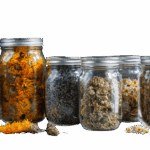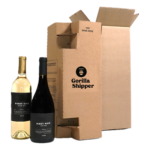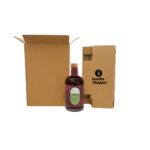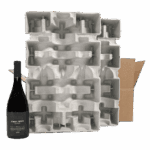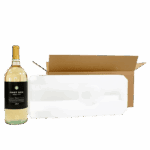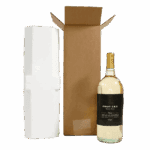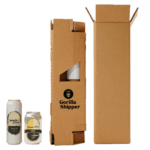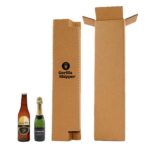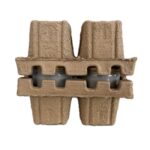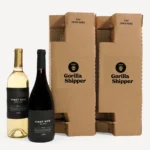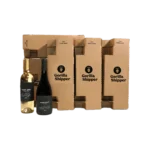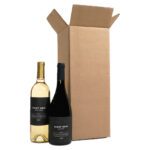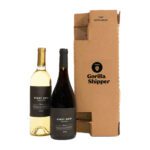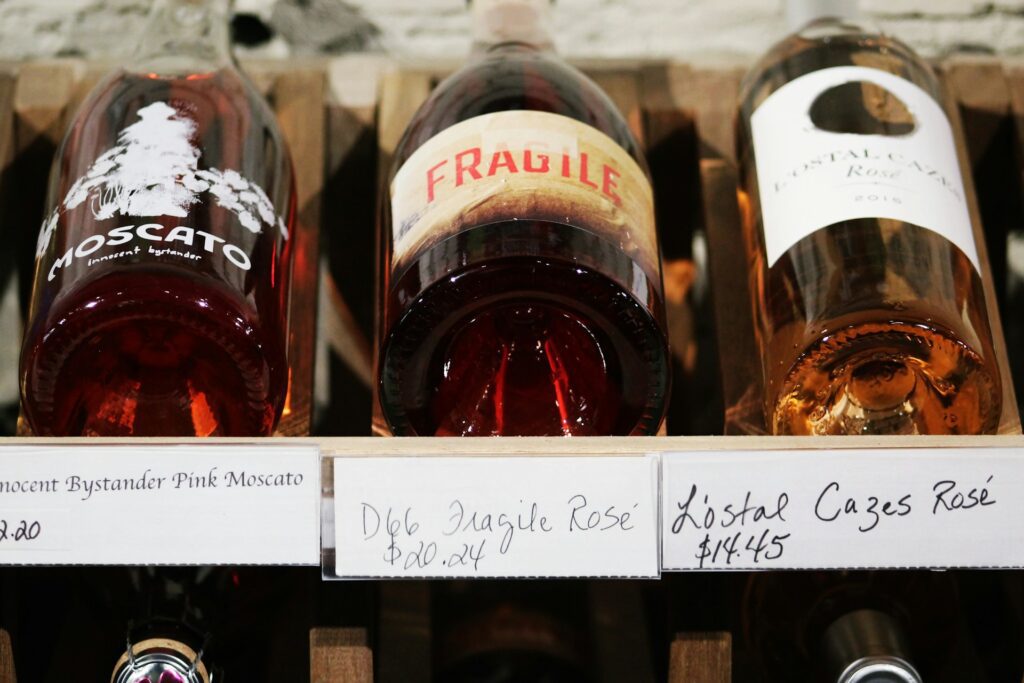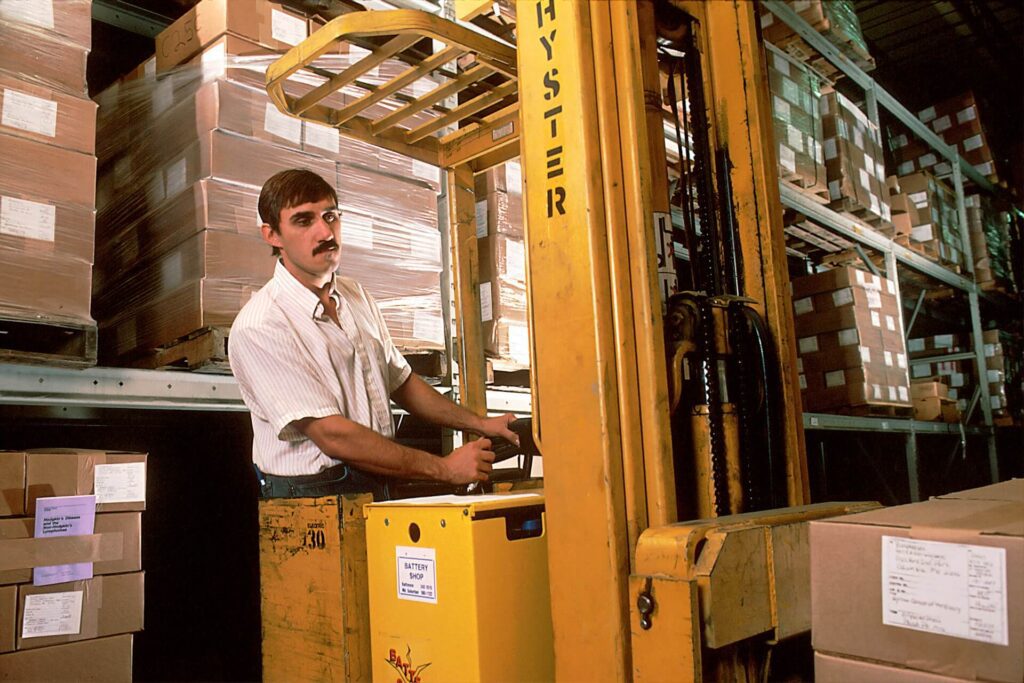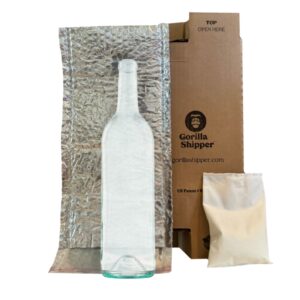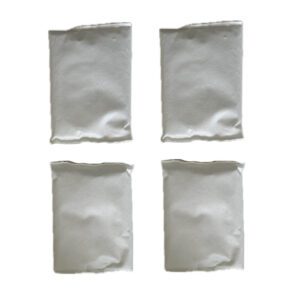The Best Packaging Materials for Shipping
If you ship fragile items, the packaging you choose can make or break your business. Using inferior materials to deliver your products can result in product damage during shipping, leading to plenty of disgruntled customers.
That’s not a scenario any business owner wants to face, so choosing the proper packaging materials for shipping is crucial. With so many options available, we know choosing the right material for your business can be confusing. So, below, we’ll share the best shipping materials for fragile items so you can ship your products safely.
Corrugated Cardboard
Breweries, winemakers, and liquor companies have a few things in common: they all produce products that need sturdy, well-made packaging materials for shipping. That’s where corrugated cardboard boxes come in.
Corrugated cardboard is strong, durable, and lightweight enough to save money on shipping costs. It’s also easy to print on, which means you can brand your boxes with your company logo or other graphics. Plus, corrugated cardboard is recyclable, and its sustainability makes it among the best shipping materials.
There are two types of corrugated cardboard: single-wall and double-wall. Each uses fluted paper between the flat cardboard walls to increase overall strength. Single-wall corrugated cardboard has one layer of fluted paper, and double-wall corrugated cardboard has two.
The double-wall configuration is twice as strong, so it’s an excellent choice for shipping heavy or fragile items. Ultimately, the type of box you choose will depend on several factors, including the size and weight of your product, how fragile it is, and how many items you need to ship at one time.
Molded Pulp
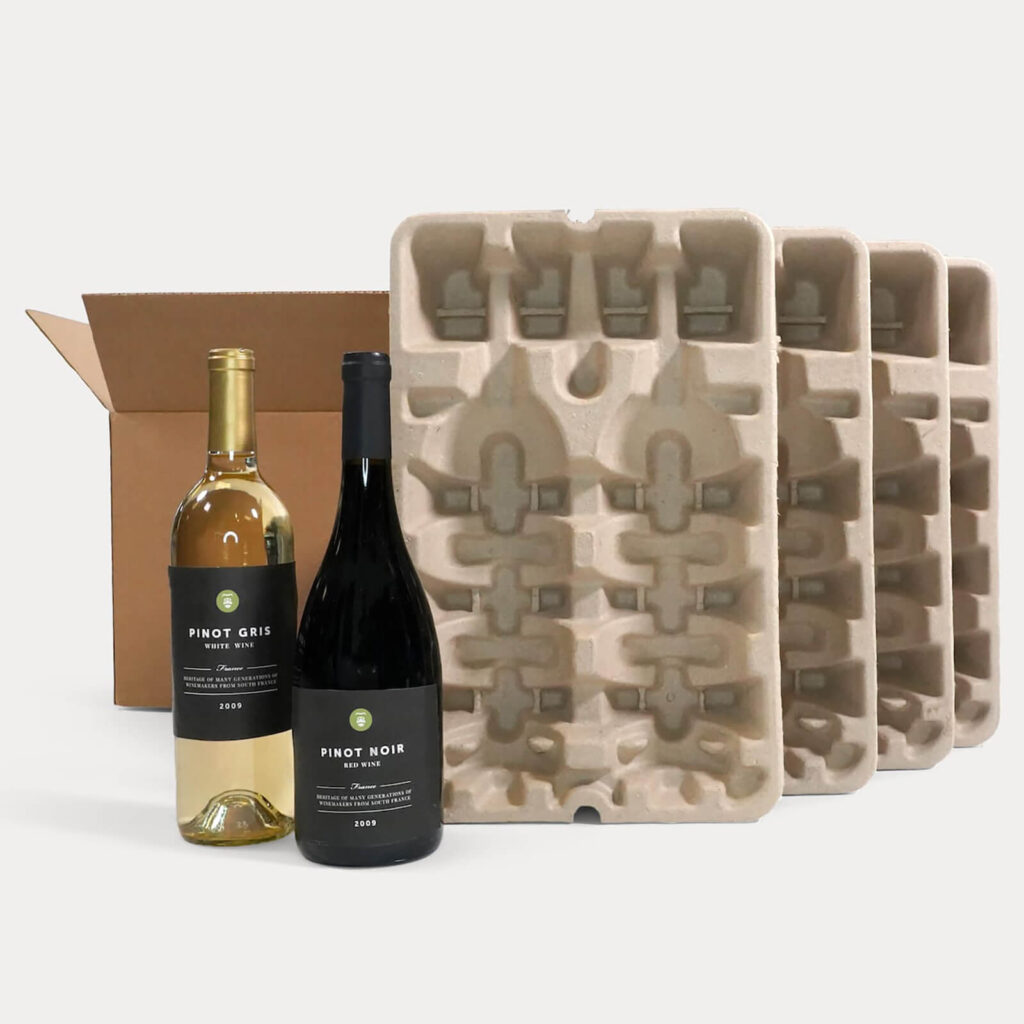
If you’re in the business of selling beverages, then you know how critical packaging materials for shipping are to customer satisfaction. Not only does it need to be functional, but it must also be eye-catching and appealing to customers.
After all, your packaging is often the first thing potential customers see. That’s why you need customized inserts for your bottles, jars, and cans. Molded pulp inserts are a wise option for businesses looking for the best shipping materials. Since they’re biodegradable, they show your customers that you’re doing your part to protect the planet.
Pulp inserts use recycled paper products formed into shapes using water and heat. They can fit nearly any size bottle or can, which makes them versatile. Best of all, they’re 100% recyclable, so they’re an eco-friendly choice. These inserts are sturdy and capable of absorbing impact. The insert will help cushion and prevent breakage if a drop occurs during shipping.
Foam
Foam is the perfect packaging material for shipping to protect your bottles and cans during transit, whether by land, sea, or air. Its primary use is to keep products from being jostled around and damaged during transportation.
Form-fit foam packaging kits fit snugly around your product, providing a high level of protection against shocks and vibrations. Loose-fill foam packaging kits use small pieces of foam that fill the area around your product. Either way, you can be sure your products remain safe during transit.
Foam is not eco-friendly, yet it is one of the best shipping materials for fragile items. Another great benefit of foam packaging is its ability to maintain constant temperature levels inside the box. Thermal insulation is vital when shipping items that can spoil or must be kept in a temperature range to sustain the integrity of the product.
You never know what environment your products will face during transportation. Having extra protection against severe heat or cold will help preserve your product’s taste, texture, and chemical composition. So, if you’re a brewery, winery, liquor company, or any other business that ships glass bottles, foam is a great option to protect your products.
Bubble Wrap

Shipping products can be a delicate and costly process, especially when those products are glass bottles or jars. Any damage sustained during shipping can lead to significant financial losses for your company. That’s why utilizing the best shipping materials is a necessity. They absorb impact, prevent breakage, and protect your bottom line.
Bubble wrap fits that criteria. You can ship almost anything with it, including fragile items. This lightweight packaging material for shipping is super easy to work with and does an excellent job of protecting your products from rough shipping conditions.
You can wrap bottles and cans individually or group them in packs. Bubble wrap is also ideal for wrapping around oddly-shaped items. No matter what you need to ship, you can adapt bubble wrap to fit your needs.
Another great thing about bubble wrap is that you can reuse it. If you receive a shipment wrapped in bubble wrap, save the bubble wrap and use it again the next time you need packaging materials for shipping. And to top it off, bubble wrap is recyclable. So you can feel good about using it because it won’t end up in a landfill.
Thermoform Shipping Trays
With climate change becoming more severe, many of us are looking for ways to minimize our environmental footprint. One way to do this is to employ the concepts of reducing, reusing, and recycling.
Thermoformed shipping trays can help in this effort by reducing the need for loose-fill packing materials and allowing for a greater packing density. They make our list of the best shipping materials because they are reusable, reduce overall storage space, and keep shipping costs to a minimum.
Thermoforming is a process that heats rigid plastics, closed-cell foams, or other specialty materials into a specific mold to create a usable product. With thermoforming, it is easy to create different sizes or shapes, and there is less waste and fewer delays associated with the manufacturing process.
In addition, thermoformed products tend to be lighter and stronger than their injection-molded counterparts. As a result, thermoforming is an increasingly popular choice for manufacturers looking for an efficient and cost-effective way to produce high-quality packaging materials for shipping.
Biodegradable Packing Peanuts
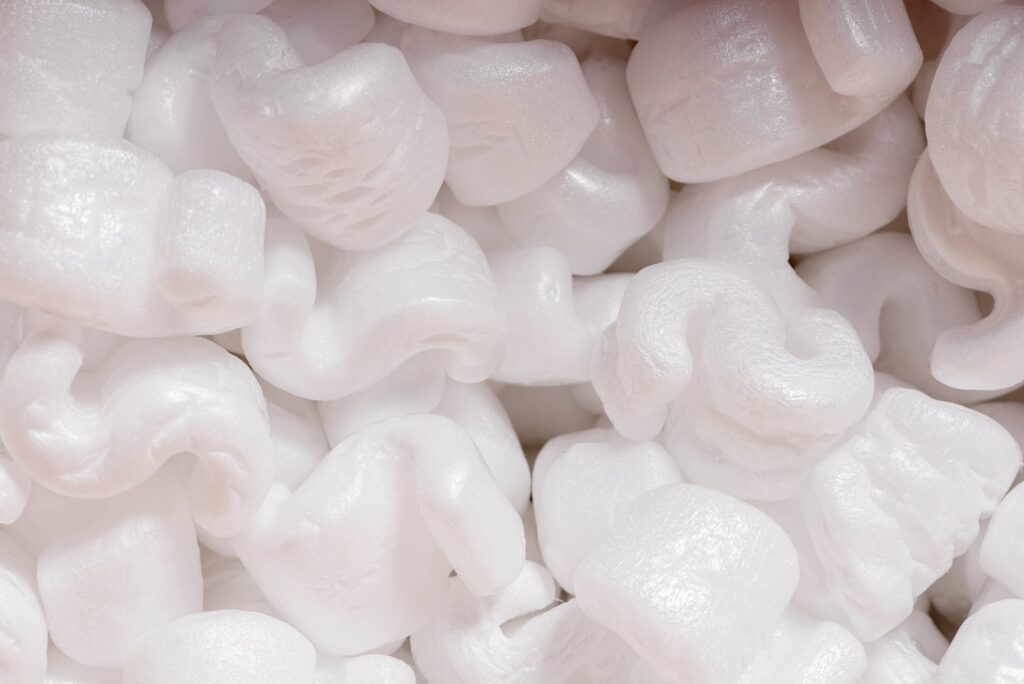
Foam-packing peanuts no longer appeal to companies or consumers. Since the 1990s, this form of packaging has lost footing, and for good reason. Environmental concerns, such as uncontrollable disposal into our oceans and waterways, have raised red flags regarding our ecosystems.
As a result, manufacturers began to produce and test biodegradable packing peanuts. This organic packaging material for shipping uses natural sources like wheat and cornstarch. Unlike their petroleum-based counterparts, these alternatives dissolve in water and are ready for composting after a single use.
For dog and cat lovers, biodegradable packing peanuts are a relief. Unlike foam peanuts, these organic alternatives are non-toxic and harmless if ingested. They eliminate potential dangers and provide peace of mind for pet owners. Therefore, we consider them to be one of the best shipping materials.
Inflatable Air Pillows
Inflatable air pillows are air-filled pouches designed to fill void inside boxes. When placed in a box, they act as a cushion to absorb shock and impact, protecting products during transit. Their primary advantage is their weight. Since they are filled with air, they add negligible weight to your packaging, helping you reduce shipping costs.
Versatile and efficient, this packaging material for shipping provides benefits beyond lowering shipping costs. They can be made in various shapes and sizes, helping you fill various voids within a box. In addition to being shock-absorbent, they also take up empty space to prevent products from moving inside their packaging. This helps reduce the risk of product damage.
What we love about this packaging option is that they’re often made from recyclable materials. Polyethylene (PE) is the most common plastic used to make air cushions. PE is recyclable and can be reprocessed into new products, reducing environmental impact. You can also find some products made from biodegradable plastics, which decompose quicker than traditional ones.
Kraft Paper
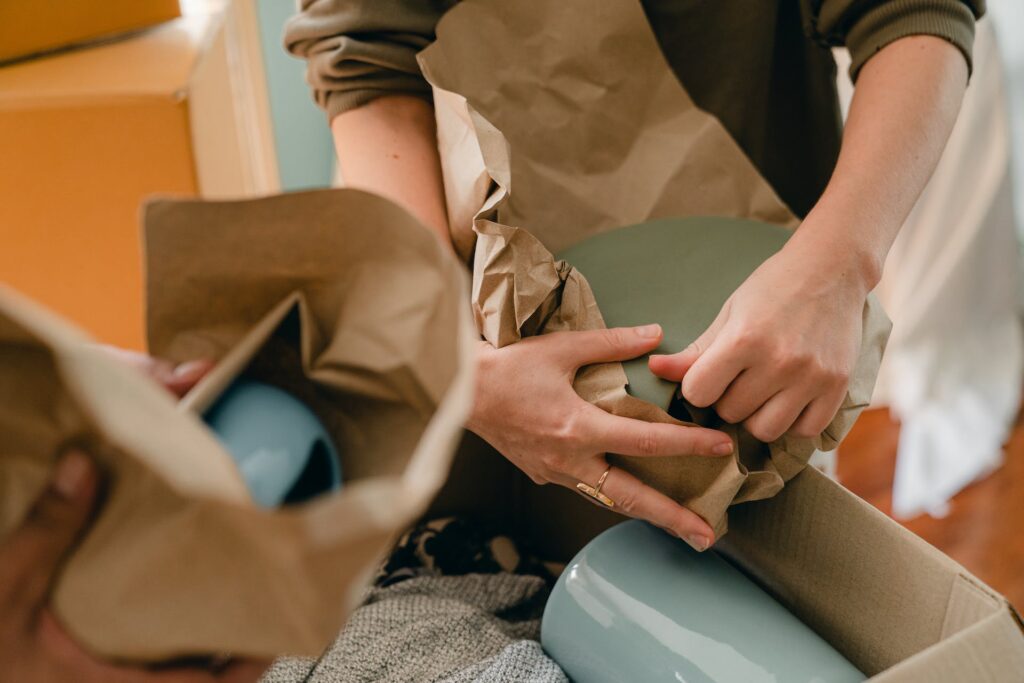
Kraft paper makes our list of the best shipping materials. Why? Because they are highly versatile and have many applications. They come in sheets, rolls, and crumpled filler, and can be used to wrap items, provide a protective layer against scratches, and fill up empty spaces inside boxes. Kraft paper is easy to use, practical, and very affordable.
Another reason why we love kraft paper is due to its eco-friendliness. Made from pulp, kraft paper is reusable, recyclable, and biodegradable. It breaks down on its own, leaving no waste behind. This environmental friendliness appeals to both businesses and consumers who are striving to reduce their ecological footprint.
Shop the Best Packaging Materials for Shipping from Gorilla Shipper
As you can see, there are a variety of materials you can use to protect your products. In this article, we’ve shared the benefits of using corrugated cardboard boxes, molded pulp inserts, foam kits, bubble wraps, inflatable airbags, and more. So, which type of packaging is best for you? It depends on your products and the level of protection you need.
If you need superior protection to prevent product damage during transit, shop for the best shipping materials from Gorilla Shipper. Our beer and wine shipping boxes are ISTA 6-FEDEX-A test certified, meaning they can withstand the roughest shipping environments. If you have any questions about our packaging solutions, contact us to speak to an expert.

